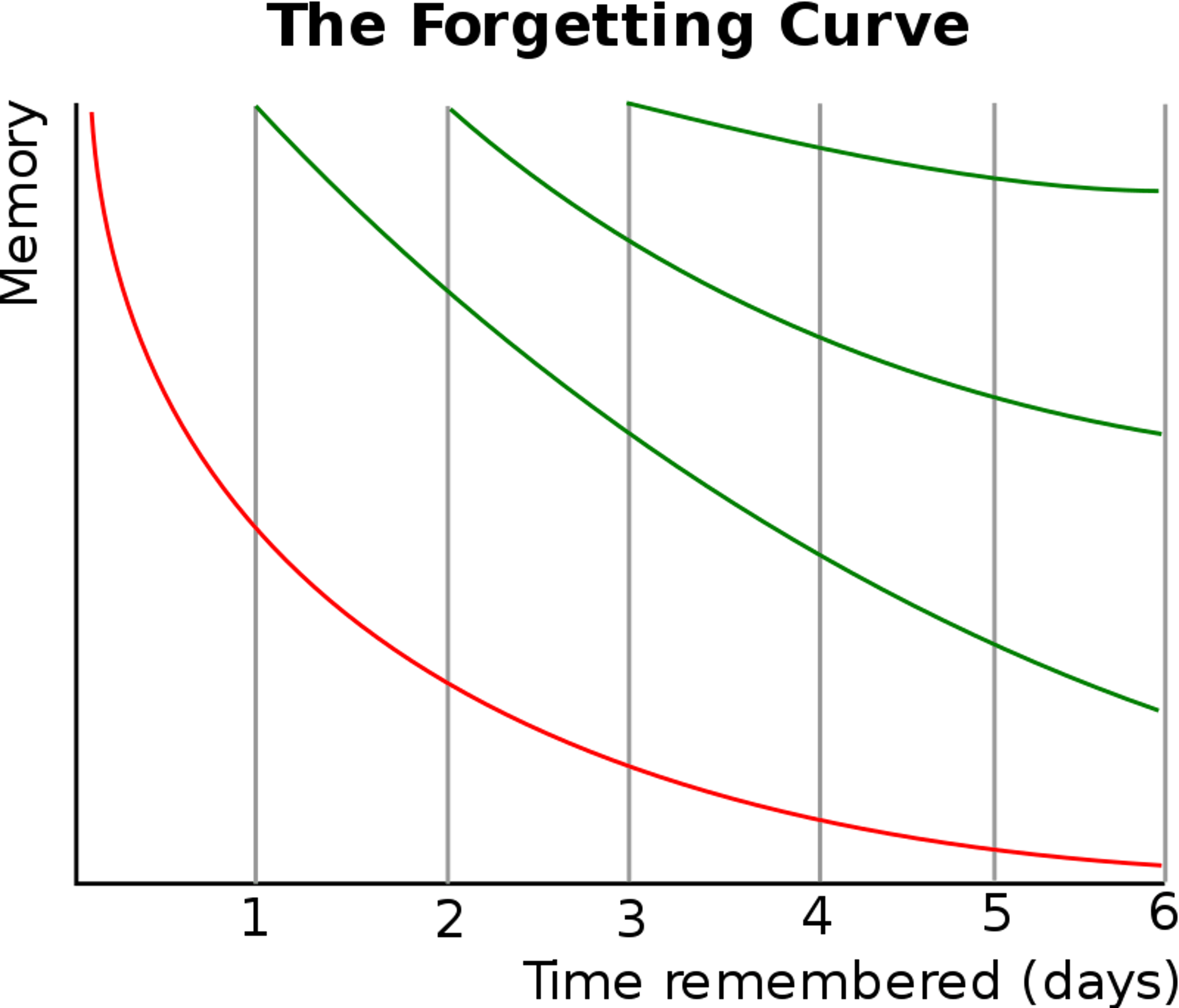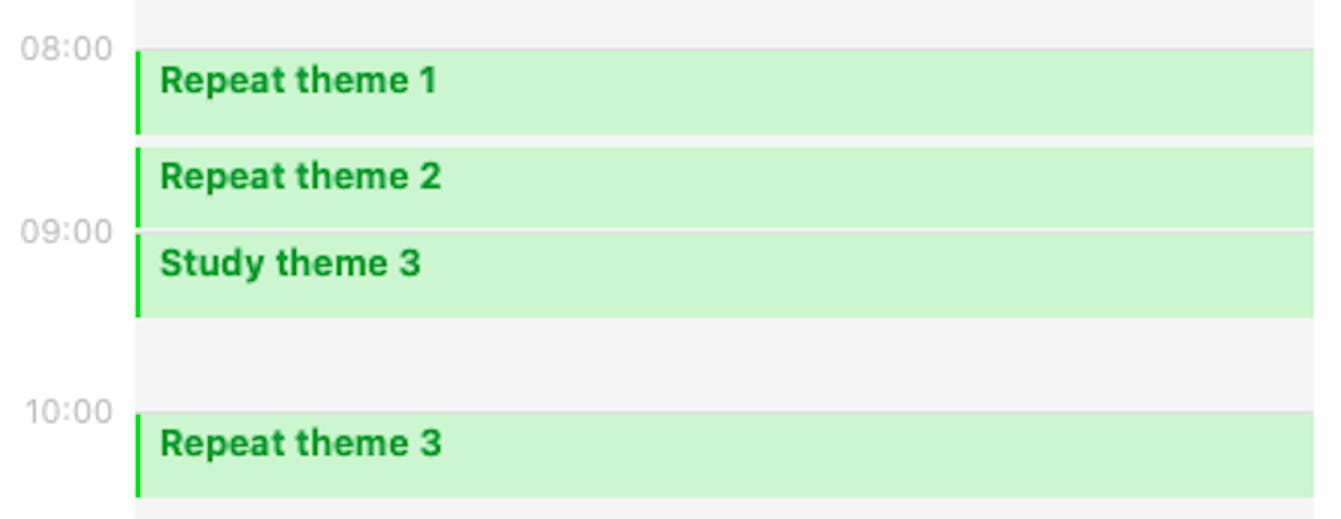The human brain is arranged evolution in a way to only remembers the important. Repetition is the mother of learning. Thus, we need to trick our brain to classify the new information as vital by repeating it over and over again.
Remember how many times after the New Year you continue to use the previous year in your documents. Breaking repetitive habits is hard. How do you use it to hack the brain and reinvent our benefit?
Main problem 🤔
During training, we face a wast ocean of new information. Unless you are a genius, without repetition, you'll forget everything.
But very often, the repetition of information occurs in a chaotic and uncontrollable order.
Like anything in life, managing the situation and hacking your brain is a key to remember new information.
I started to study foreign language. However, I've noticed that after 1–2 weeks I didn't have significant progress.
Ebbinghaus forgetting curve 🧑🔬
I have already seen information about the interval memorization method and tried it at university. Anki software was used, it is desktop and did not give the necessary mobility in 2010. Because of that, this approach seemed me very resource-intensive.
Have you ever heard about the interval memorization method? I've tried it in university, where I used Anki software. It is a desktop and did not give the necessary mobility in 2010. Thus, this approach seemed too resource-intensive.
In the research, I've found that the interval repetition approach is scientifically approved and described as follows — Ebbinghaus Forgetting Curve.
In essence, it has one main conclusion. If you periodically repeat the information you have learned, there is a low chance of forgetting it. Basically, the more you repeat learned information, the better you remember it.

How to use the Ebbinghaus principle in daily routine 🤓
Let's take the example of learning a foreign language mentioned above.
How to implement the repetition into your learning daily routine.
- Day 1: Study theme 1
- Day 1 (in 20 minutes): Repeat theme 1
- Day 2 (in 24 hours): Repeat theme 1, study new theme 2
- Day 2 (in 20 minutes): Repeat theme 2
- Day 3 (in 48 hours): Repeat theme 1, repeat theme 2, study theme 3
- Day 3 (in 20 minutes): Repeat theme 3
- Day 7: Repeat theme 1
- Day 30 (in 1 month): Repeat theme 1
Similarly, (after 1 week and 1 month) repeat the rest of the topics.
Use a calendar to plan your studies.

Conclusion
Using knowledge of the Ebbinghaus forgetting curve allows you to effectively acquire new knowledge and predict how long you will learn the skill you need.
Hopefully, this article will help you to manage your time spent on training effectively.
If you have more questions, add me to LinkedIn. I will try to answer your questions and help you.










